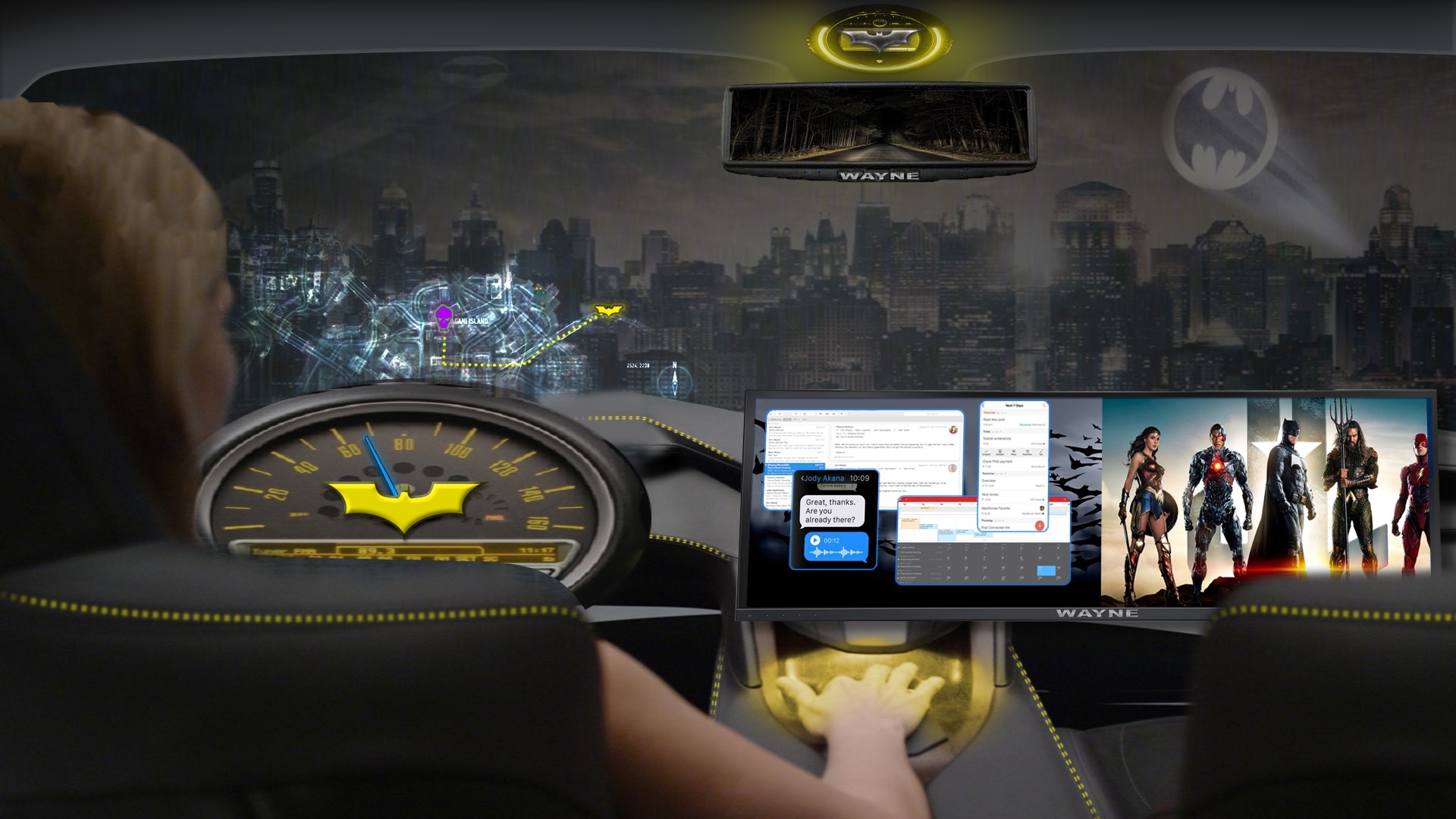

Self-driving cars will give people a lot of extra time, and Intel believes that time can be valuable to companies hawking products and services. At the 2017 Los Angeles Auto Show, Intel announced a partnership with Warner Bros. to develop what it calls “in-cabin immersive experiences in autonomous-vehicle settings.” The goal is to make autonomous cars a platform for both entertainment and advertising.
Intel says Americans spend about 300 hours per year in cars, and believes all of those hours could be prime video-viewing time. Hence the collaboration with Warner Bros., which could see the company’s movies and television shows beamed into future self-driving cars. But Intel doesn’t want to stop there.
The tech company wants to use augmented-reality and virtual-reality tech to alter a passenger’s experience. Intel thinks it can use those technologies to make people feel like they’re in the Batmobile, which would also be a great opportunity for Warner Bros. to tell passengers about upcoming Batman movies. An Intel press release noted that these tech features could “render the car a literal lens to the outside world, enabling passengers to view advertising and other discovery experiences.”
It’s not surprising that companies are pursuing this. Advertising and other branded content represent another potential revenue stream for self-driving cars, alongside sales and ride-hailing services. Autonomous vehicles could become extensions of peoples’ smartphones, with all of the potential for marketing and data mining that entails. Intel plans to test this concept using one of the 100 cars in its autonomous test fleet, and we would be fine if that was as far as it got.
Love it or hate it, time spent in cars is one of the few parts of the average day when we don’t have to be bombarded by advertising. It would be nice if it stayed that way.